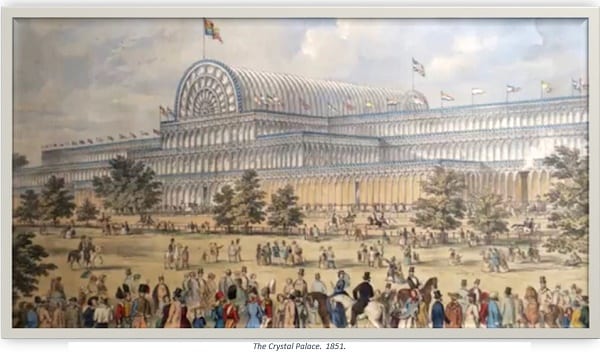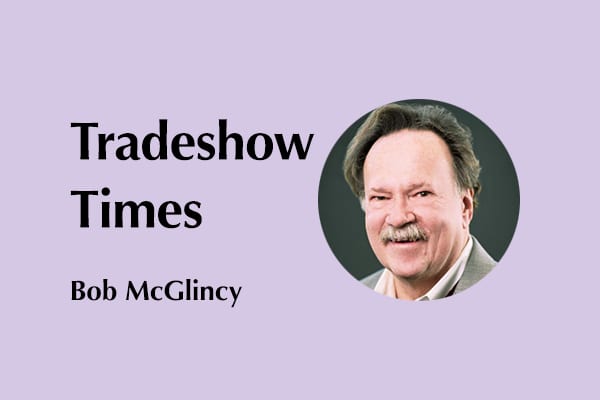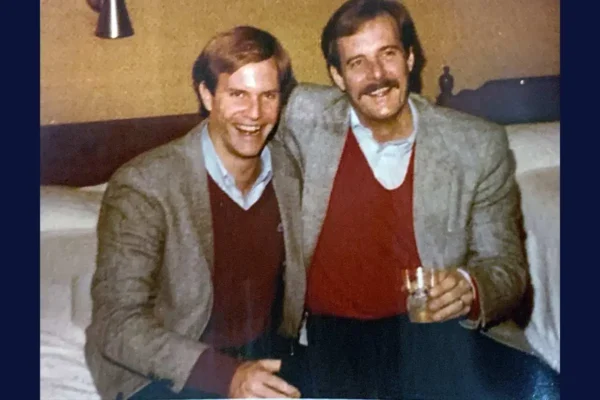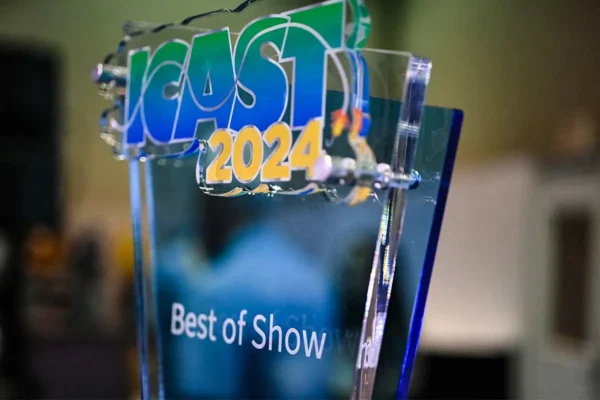by Bob McGlincy
A Brief History of Tradeshows, 1851-1901
 Tradeshows today owe a debt to the past. Exhibitions, expositions, and world’s fairs in the 19th century invited companies to display innovative technologies and sell new products. Most of the shows attracted over a million people (some shows attracted tens of millions)—and where there were more people, there was more opportunity. Cities soon realized that by hosting an exposition, they could make money selling food, entertainment and lodging.
Tradeshows today owe a debt to the past. Exhibitions, expositions, and world’s fairs in the 19th century invited companies to display innovative technologies and sell new products. Most of the shows attracted over a million people (some shows attracted tens of millions)—and where there were more people, there was more opportunity. Cities soon realized that by hosting an exposition, they could make money selling food, entertainment and lodging.
The first chart below lists 15 major shows in the 30 years after “The Great Exhibition of 1851;” the second chart lists 26 shows in the next 20 years.
The first modern tradeshow was in London in 1851. It attracted more than six million people and had exhibits from 44 countries. The show made a substantial profit, and it has been imitated in cities around the globe ever since. At that first show in 1851, products were not allowed to be sold on the show floor (although some items were delivered to buyers after the show closed that October). New York in 1853 and Paris in 1855 were the first two shows to sell products directly from the show floor. In Paris, some exhibitors had price tags on their products, and turned sections of the hall into a merchandising show. Written show floor sales orders first become commonplace at the Philadelphia Centennial Exposition in 1876.
 Paris was the first city to attract more than 10 million visitors (1867 and 1878). Paris was also the first to surpass 20 million attendees (1889) and the first to surpass 50 million (1900). In 1881, the International Cotton Exposition in Atlanta became only the second city to make a profit on their show. The profit was $4,038, which may sound unimpressive; but that is $104,199.96 in 2021 dollars. Chicago in 1893 would be the next show to realize a profit. But, as mentioned above, all cities benefited from the economic impact of tourists and visitors.
Paris was the first city to attract more than 10 million visitors (1867 and 1878). Paris was also the first to surpass 20 million attendees (1889) and the first to surpass 50 million (1900). In 1881, the International Cotton Exposition in Atlanta became only the second city to make a profit on their show. The profit was $4,038, which may sound unimpressive; but that is $104,199.96 in 2021 dollars. Chicago in 1893 would be the next show to realize a profit. But, as mentioned above, all cities benefited from the economic impact of tourists and visitors.
The shows listed in these two tables are only a partial sampling. From 1800-1850, there were approximately 30 expositions; from 1851-1901 that number exploded to more than 240. In the first 10 years after London, additional locations hosting shows included: Naples in 1853; Genoa and Melbourne in 1854; Brussels in ’56; Manchester and Lausanne in ’57; Dijon, Philadelphia, and Turin in ’58; and Brisbane, Melbourne, Metz, and Amsterdam in 1861. The number of cities hosting large events dramatically increased in subsequent decades.
Shows in the late 1800s occurred in all areas of the globe, including Europe, Australia, Japan, North and South America, South Africa, India and the Mideast. Indochina and China first hosted large international shows in 1902 and 1910.
 During the last half of the 19th century, and into the first decade of the 20th century, multiple shows occurred in the U.S. (in addition to the ones listed in the charts above). Cities included: Philadelphia in 1858, 1884, and 1899; Milwaukee in 1881; Boston and Louisville in 1883; Buffalo in 1889; D.C. in 1892; New York in 1893, 1902, 1905, 1908, and 1909; Atlanta in 1895; Chicago in 1897 and 1907; San Francisco in 1898 and 1909; Nashville in 1897; Omaha in 1898 and 1899; Charleston in 1901 and Toledo in 1902; Portland in 1908 and Seattle in 1909. In 1904, St. Louis set a record hosting 63 countries and drawing a respectable 19.7 million visitors.
During the last half of the 19th century, and into the first decade of the 20th century, multiple shows occurred in the U.S. (in addition to the ones listed in the charts above). Cities included: Philadelphia in 1858, 1884, and 1899; Milwaukee in 1881; Boston and Louisville in 1883; Buffalo in 1889; D.C. in 1892; New York in 1893, 1902, 1905, 1908, and 1909; Atlanta in 1895; Chicago in 1897 and 1907; San Francisco in 1898 and 1909; Nashville in 1897; Omaha in 1898 and 1899; Charleston in 1901 and Toledo in 1902; Portland in 1908 and Seattle in 1909. In 1904, St. Louis set a record hosting 63 countries and drawing a respectable 19.7 million visitors.
The steady growth and popularity of shows in the 19th century clearly indicated the need for them, and foreshadowed the popularity of tradeshows and convention centers in the U.S. and Europe in the 20th century.
Future columns will discuss specifics about some of these shows, and detail how entrepreneurs displayed new products, developed international brands—and in some cases, founded major corporations lasting into the 21st century.
Bob McGlincy is director, business management at Willwork Global Event Services. Willwork creates engaging, energized, and exceptional event experiences. He can be contacted at Bob.McGlincy@willwork.com






























